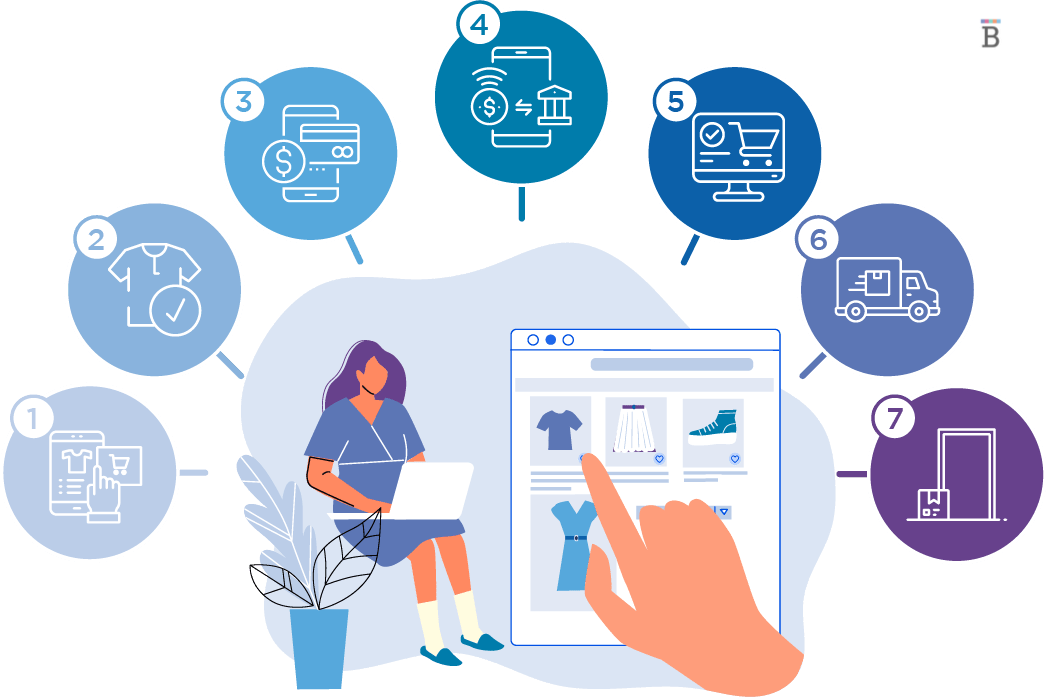Every website reaches a point where its traffic starts to stagnate. To overcome this obstacle, it is necessary to take proactive measures and make deliberate efforts to increase site traffic. How can this be achieved?
Learn 51 ways to boost website traffic: improve site, create content, self-promote, build community. Implement these to increase traffic.
Site Improvement


First, review your entire website to ensure optimization. With control over your domain, implementing changes is free. Tweaking pages can significantly boost website traffic, as seen in a case study by Michael Karp on robbierichards.com. On-page optimization generated 20,314 organic page views for UAV Coach, according to Karp.
1. Insert Keywords in Your H1
Add primary keywords to your main heading for better SEO and reader understanding. Be cautious not to overuse keywords and appear spammy.
You can leverage subheadings to add other relevant keywords.
2. Check Your Metadata Information
Metadata info in title and description affects post visibility in search engine results. Elise Dopson boosted search traffic by 54% and improved average ranking by ten spots. Impressions also increased by 57%.
Use your metadata fields to insert keywords. But keep them looking organic. Make sure you have compelling titles and descriptions.
3. Fix Your URL Structure
Are your URLs filled with random character strings? These are known as dynamic URL strings, and they are detrimental to your website. It is advisable to employ descriptive words in your URLs. This is advantageous as URLs can incorporate keywords which search engines utilize to ascertain the content of your pages.
4. Find New Keywords
Don’t expect to rank just because you’re focusing on a high-volume keyword. You’ll need more than that to see any progress. Keyword research is crucial for improving website traffic.
In a case study, the author achieved a remarkable feat by ranking for 30,911 keywords. They carefully selected less competitive keywords and considered buyer intent.
5. Focus on Long-Tail Keywords
In the case study, it’s mentioned that using long-tail keywords can be advantageous. These phrases are longer and more specific than regular keywords, but have lower search volumes.
However, as voice search develops, the phrases people use to search online change. To be specific, search queries are now getting conversational. So using long-tail keywords would help with ranking for voice search queries.
6. Place Internal Links
The homepage should have a logical structure and hierarchy, not just links to subpages. Dave Davies improved his site, Trophy Central, by enhancing navigation and adding links to sub-categories for better search engine discovery.
The result? If you’d like to see similar (or better) results, look at your internal linking structure and see if there are aspects you could improve on.
7. Spread Keywords Throughout Your Posts
In SEO, it’s important to include keywords in the body of your post, not just in heading tags or metadata. Latent semantic keywords (LSI) are conceptually related terms that Google uses to understand your content.
LSI keywords in a post about growing herbs, like “gardening”, “pots”, “soil”, “mint”, and “chives”, help search engines understand the topic.
If you need more information, Backlinko published a comprehensive post on LSI keywords. You should include LSI keywords in your posts as often as possible.
8. Look at Your Competitor’s Keywords
To find keywords, check your competitors’ targeted words using Ahrefs’ Content Gap tool.
The Hair Bow Company discovered new keywords it had overlooked and created content around them. As a result, they now rank on the first and second pages of search results.
9. Do Guest Posts
Adam Enfroy tested the impact of guest posting on his blog by publishing eight guest posts within 15 days to gain backlinks and increase website traffic.
He gained 247 backlinks, increased his domain rating by 12 points, and saw a 372% rise in organic traffic. To track progress, use Ahrefs or Alexa Rank, or monitor website traffic with Google Analytics.
10. Minimize Your Bounce Rate
The bounce rate is the number of people who leave your site after one page. Lack of engagement is usually to blame. A 30-50% bounce rate is excellent. Anything lower may mean you need to fix your analytics tracking.
Tips to address high bounce rates and improve user experience. One case study showed that site tweaks increased conversion rate but also raised bounce rate. SEO agency made changes to text formatting, internal links, and added video. Result: Bounce rate decreased without impacting conversion rate.
11. Make Your Site Responsive
Google now considers site responsiveness as a quality indicator and offers a tool to test mobile-friendliness. Vorbly optimized a cafe’s site, resulting in a 53% sales increase and 1,120 daily visits. Since 70% of users visit via mobile, it was a wise decision.
Make sure that you optimize your site for phones and tablets. WordPress users have the option of choosing a responsive theme, so they don’t have to start a design from scratch.
12. Improve Your Site Speed
Google wants its users to have the best experience. That’s why it rewards sites that load fast. There are case studies that show how optimizing websites to load faster leads to increased rankings and website traffic.
What are some of the things you can do to make your site load faster?
Optimize the images in your posts, minimize CSS, JavaScript, and HTML, reduce page redirects, leverage browser caching, enhance your servers, and employ content distribution networks.
13. Look at Your Analytics
Your analytics data can provide valuable insights. It not only reveals the number of monthly visitors you receive, but also indicates which posts resonate with your audience. Moreover, Google Analytics offers a heatmap feature that shows how users engage with your website. This data is essential when determining internal linking strategies and understanding the content your readers seek. By leveraging this information, you can optimize your pages accordingly.
14. Use Schema
Schema is a code you add to your posts for search engines to display in search results. It comes in various forms. For example, a star rating gives users an idea about a book before clicking the link. You can add schema markups using Google’s Structured Data Markup Helper tool by entering your URL and selecting relevant answers.
Content Creation


Content is crucial for increasing website traffic. Brian Dean of Backlinko created the Skyscraper Technique 2.0, boosting his page’s organic traffic by 652.1%.
This content strategy uses high-quality posts to drive website traffic, proving that content creation remains important for attracting visitors. The strategies below improve posts for better search engine visibility.
15. Find Your Niche
To begin, identify your niche. What is the focus of your website? Which specific information are your visitors seeking and what is your area of expertise? Pose these inquiries to yourself.
Having a specific niche helps determine the keywords to research, the type of posts to write, and provides a clearer understanding of the target audience. It is not advisable to create a website that caters to a broad audience. Instead, aim for a more focused website.
16. Publish Regularly
To be taken seriously, maintain a posting schedule. This lets your audience know when to expect new content and shows your dedication to sharing knowledge.
By consistently posting new content on your site, you ensure that visitors have a reason to return, thereby maintaining a steady flow of organic website traffic.
17. Write Better Headlines
The headline is crucial for attracting readers and search engines. Use tools like CoSchedule’s Free Headline Analyzer to optimize your post titles.
Choose a headline that effectively captures the essence of your post to engage your audience.
18. Insert High-Quality Images
If you have a habit of stealing images from others, you should immediately cease this behavior. This can potentially result in legal action and also harms your website. Users prefer to view high-quality, authentic images from you.
There are different scenarios wherein images matter:
- Users use images to understand the point you’re trying to make.
- Users want to share your images on social media.
- Users want to look at images they’ve never seen before (as in the case of travel bloggers).
- Users use it to understand a product better (especially for those in e-commerce).
Having unique images makes you a reliable source of information. This alone is enough to make your audience come back for more.
19. Update Old Blog Posts
Do you have a large collection of old posts that used to perform well but are now experiencing a decline in website traffic? Or perhaps they were relevant in the past but lack relevance in today’s context?
Time to repurpose old posts. Update them to be more current. Only need to update a few sections to make them relevant. Justify updating publishing date. Add new quotes, update images, replace outdated sections, and make changes to appeal to today’s audience.
20. Publish Infographics
Infographics make it easier for your audience to share your message, resulting in free advertising for you. They also increase your profile by sharing unique information that is not easily accessible.
You will appear as a niche expert, attracting visitors to your site. Making your own infographic is easier than you imagine. Canva and similar services enable the creation of infographics without hiring a graphic designer.
21. Upload Videos
Adding videos to your site is a surefire way of getting eyes on your website. Videos do a couple of things:
- They help explain the purpose of your website or post.
- They serve as eye candy for new visitors.
- They improve customer engagement.
- They increase the time a visitor stays on your page.
- The longer people stay on your page, the better your bounce rate would be. So consider adding videos to your pages.
22. Do List Posts
List posts are popular because they allow users to consume information quickly. They are also easier for people to write. If your audience isn’t interested in long-form posts, try using list posts as an alternative.
Besides list posts, there are other types of content you can explore: how-to posts, quiz posts, and infographics. Adapt your content to suit your audience and don’t limit yourself to just one type. Experiment and see what works best as preferences vary for each person.
23. Launch a Podcast
Podcasts became popular recently and now it seems everyone has one. It’s a missed opportunity if you don’t have one because it’s easy to produce with minimal equipment needed. You can film it anywhere, like a bedroom or home office.
Releasing a podcast on a regular basis can attract new users to your site. Alternatively, consider being a guest on another person’s podcast to increase your exposure and enhance your profile.
24. Conduct Interviews
Instead of always sharing your own content, try interviewing an expert in your industry. It builds relationships and exposes you to their audience.
Interviews are efficient for generating new website content. Simply transcribing the conversation allows for easy content creation. Additionally, it boosts online visibility when the person interviewed is searched for.
25. Publish In-Depth Posts
Publish lists instead of lengthy content. In-depth posts are beneficial for search engines and consolidating keywords. Long-form copy allows for long-tail and LSI keywords.
Users spend more time on your site as a result. Additionally, who doesn’t appreciate an informative post?
26. Improve Your Click-Through Rate
The click-through rate, as the name implies, indicates the number of individuals who click on your posts in the SERPs. Google provides an explanation on how it calculates this rate.
Earlier, we advised optimizing headings, metadata, titles, URLs, and keyword placement to enhance click-through rate. Evaluate these areas collectively to identify areas for improvement.
Self-Promotion


Improve website traffic by promoting your name through various channels like social media, forums, and conferences. Hootsuite tested if social media impacts SEO.
The study found that posting on social media within 48 hours improves search engine rankings, while not promoting posts leads to a loss in rankings. Self-promotion is crucial for increasing website traffic.
27. Promote on Social Media
Social media platforms like Facebook are great for sharing posts and building a fan community. Color Whistle’s case study showed a 218% increase in site visits through social media sharing.
28. Make Free Online Courses
Promoting online courses can drive site engagement and boost backlinks. Create niche-specific courses like camera guides for photography bloggers to establish authority. Ensure accurate information and thorough research to avoid potential drawbacks.
29. Do Giveaways
Giveaways are a popular way to gain a loyal following. You can ask your audience to like, comment, or sign up to qualify.
30. Go on Forums
Online forums connect people with similar interests. If you sell food supplements, you’ll find potential customers on food supplement forums. This applies to every niche.
Avoid using forums for product promotion. Instead, foster engagement and build relationships with the community. This will eventually drive traffic to your website.
31. Launch Contests
You can engage people on your website by asking for their help and offering giveaways. When they enter the contest, ask for their email addresses to build a list of potential customers. This list can be used for future promotions. Running contests can also benefit SEO, as mentioned by the FTF Agency.
32. Reply to Blog Comments
Replying to blog comments alerts the blog owner and enables you to engage in several activities. All of these actions have the potential to boost your website traffic.
- You can collaborate on a project.
- You can reach out for a guest blog spot.
- You can ask the blogger for an interview request.
- You can ask for a backlink.
- Who knows? Maybe the blogger would link to you organically, and you wouldn’t have to ask for anything.
You’re also introducing yourself to the other commenters on the post. If they appreciate your content, they might visit your blog.
33. Go to Conferences
Attending conferences connects you with industry peers, providing face-to-face networking chances. Meet-and-greets offer opportunities to promote your site and engage with influential individuals seeking potential collaborations.
34. Host Webinars
Webinars enable you to connect with fans and leads. A basic webcam suffices, eliminating the need for costly equipment. Hosting webinars enhances your authority and promotes your brand. Maximizing their impact can be achieved by transcribing and repurposing them as blog posts.
35. Publish on SlideShare
SlideShare is a platform for sharing presentations with a global audience. Users can find slides that interest them, even if they are not easily found on search engines. You can include a link to your website for more information.
36. Do Collaborations
Collaborations involve working with influencers or brands on a joint project. For example, in the fitness industry, you can create a workout routine with a partner and share feedback. Both of you can write blog posts about the experience and cross-promote by linking to each other’s posts.
37. Sponsor Events
Event sponsorships introduce your brand to potential new audiences. By sponsoring events, your brand will be prominently featured on promotional materials, including banners, signs, and websites.
If you lack funds, sponsoring large events is unnecessary. Begin by participating in local events, especially if you operate a community-based business.
38. Send Newsletters
Newsletters remain valuable for prompting site visits, enabling the display of recent posts and promotions. Shane Barker offers insights on leveraging newsletters to boost website traffic.
39. Try Paid Search
Paid search is a costly yet efficient strategy that generates traffic, enhances conversions, and maximizes visibility. Lyfe Marketing successfully utilized this method, resulting in a remarkable 457% increase in sales.
40. Explore Email Marketing
Email marketing is an efficient and measurable way to promote directly to your audience’s inbox. It boosts brand recognition, works with any budget, and Promodo’s case study supports its success with increased website sessions and revenues for their client.
Community Building


To foster lasting connections, engage a community. Fans drive website traffic, promote your site, and impact its growth.
Sales Hacker’s success can be attributed to their community’s content, which included posts from B2B sales, marketing, and customers. Despite facing editing challenges, this highlights the importance of building relationships within your community to increase website traffic.
41. Add Share Buttons
Adding social sharing buttons to your pages can enhance site visits. It is easy to incorporate these buttons into your site, especially for WordPress users who can simply install a plugin to add them with just a few clicks.
Here are some available social share button plugins for WordPress that won’t require any modifications to your site’s code.
42. Add Click to Tweet
Click to Tweet is a WordPress plugin that facilitates the sharing of noteworthy quotes, statistics, and other phrases you wish to share. Unlike simply adding a Tweet button, this plugin allows you to select the specific quote to be shared.
43. Create Facebook Community Pages
Facebook community pages are a useful way to engage with your community and determine the content they desire. Businesses use them to boost website traffic and increase brand recognition, as demonstrated by HubSpot’s case studies.
44. Be Active on Twitter
Like Facebook, Twitter allows you to promote content and listen to people’s opinions. Using hashtags helps you engage in conversations about your interests. If your post trends, you’ll get more traffic.
45. Leverage Instagram to Drive Website Traffic
If you have spare images, consider posting them on Instagram. It benefits not only bloggers but also brands aiming to broaden their audience, especially lifestyle brands.
46. Share Images on Pinterest
Pinterest stands out as a site for posting various types of images, including infographics and long-form content. Leanne Wong used it to boost her page’s organic views, resulting in a 459% increase within a week.
47. Promote on LinkedIn
LinkedIn is the appropriate platform for promoting business articles and similar content, as it distinguishes itself from Facebook and Twitter with a more professional atmosphere.
48. Post on Reddit
Marketers usually avoid Reddit due to its savvy community that can detect promotions easily. However, posting relevant content in the right subreddit can generate significant website traffic. Shane Barker wrote an informative article about using Reddit for SEO.
49. Make Your Presence Felt on YouTube
YouTube is an excellent platform for video marketing. You can create a vlog to complement your website and discreetly encourage viewers to visit your site once you have established a loyal audience.
50. Publish on Medium
You can use Medium to syndicate your content, as it is a popular blogging platform known for its simplicity and community features. Now you may be wondering if it is acceptable to repurpose content.
Moz seems to think so. They even published a Whiteboard Friday episode all about it.
51. Advertise on Social Media Platforms
If advertising on Google doesn’t appear advantageous to you, consider advertising on social media platforms. Several organizations have achieved success on social media. School Year Abroad, for instance, increased its site sessions by 515%.
What makes this amazing is that they only had to spend $350 a month on the campaign.
Conclusion
Implement these strategies to boost your monthly visitor count. Many of them are cost-free and only necessitate time investment. With a team by your side, you can swiftly address on-page optimization strategies.
Go ahead and try these strategies so you could drive more traffic to your site. There’s no real reason why you shouldn’t.



















